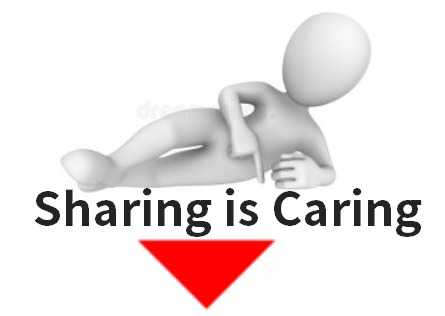
Top Jquery Interview Questions And Answers
Here are top 11 objective type sample Jquery Interview questions and their answers are given just below to them. These sample questions are framed by experts from Omni Academy who trains for Jquery Training to give you an idea of type of questions which may be asked in interview. We have taken full care to give correct answers for all the questions. Do comment your thoughts Happy Job Hunting!
Top Answers to JQuery Interview Questions
1. Compare Jquery & AngularJS
| Criteria | JQuery | AngularJS |
| Availability of RESTful API | No | Yes |
| Support for MVC | No | Yes |
| Two-way data binding | No | Yes |
2. What is $() in jQuery library?
The $() function is an alias of jQuery() function, at first it looks weird and makes jQuery code cryptic, but once you get used to it, you will love it’s brevity. $() function is used to wrap any object into jQuery object, which then allows you to call various method defined jQuery object. You can even pass a selector string to $()function, and it will return jQuery object containing an array of all matched DOM elements. I have seen this jQuery asked several times, despite it’s quite basic, it is used to differentiate between developer who knows jQuery or not.
3. What are the advantage of using jQuery?
- Easy to use and learn.
- Easily expandable.
- Cross-browser support (IE 6.0+, FF 1.5+, Safari 2.0+, Opera 9.0+)
- Easy to use for DOM manipulation and traversal.
- Large pool of built in methods.
- AJAX Capabilities.
- Methods for changing or applying CSS, creating animations.
- Event detection and handling.
- Tons of plug-ins for all kind of needs.
4. Difference between ID selector and class selector in jQuery?
If you have used CSS, then you might know the difference between ID and class selector, It’s same with jQuery. ID selector uses ID e.g. #element1 to select element, while class selector uses CSS class to select elements. When you just need to select only one element, use ID selector, while if you want to select a group of element, having same CSS class than use class selector. There is good chance that, Interview will ask you to write code using ID and class selector. From syntax perspective, as you can see, another difference between ID and class selector is that former uses “#” and later uses “.” character. More detailed analysis and discussion, see answer.
5. Difference between $(this) and this keyword in jQuery?
Could be a tricky questions for many jQuery beginners, but indeed it’s simplest one. $(this) returns a jQuery object, on which you can call several jQuery methods e.g. text() to retrieve text, val() to retrieve value etc, while this represent current element, and it’s one of the JavaScript keyword to denote current DOM element in a context. You can not call jQuery method on this, until it’s wrapped using $() function i.e. $(this).
6. What is main advantage of loading jQuery library using CDN?
This is slightly advanced jQuery question, and don’t expect that jQuery beginners can answer that. Well, apart from many advantages including reducing server bandwidth and faster download, one of the most important is that, if browser has already downloaded same jQuery version from same CDN, than it won’t download it again. Since now days, almost many public websites use jQuery for user interaction and animation, there is very good chance that browser already have jQuery library downloaded. Curious reader, please see the answer for in depth analysis.
7. How do CSS precedence/cascading rules work? How does the !important directive affect the rules?
CSS style rules “cascade” in the sense that they follow an order of precedence. Global style rules apply first to HTML elements, and local style rules override them. For example, a style defined in a style element in a webpage overrides a style defined in an external style sheet. Similarly, an inline style that is defined in an HTML element in the page overrides any styles that are defined for that same element elsewhere.The !important rule is a way to make your CSS cascade but also have the rules you feel are most crucial always be applied. A rule that has the !important property will always be applied no matter where that rule appears in the CSS document. So if you wanted to make sure that a property always applied, you would add the !important property to the tag. So, to make the paragraph text always red, in the above example, you would write:p { color: #ff0000 !important; }p { color: #000000; }
8. What is a class? What is an ID?
A class is a style (i.e., a group of CSS attributes) that can be applied to one or more HTML elements. This means it can apply to instances of the same element or instances of different elements to which the same style can be attached. Classes are defined in CSS using a period followed by the class name. It is applied to an HTML element via the class attribute and the class name.The following snippet shows a class defined, and then it being applied to an HTML DIV element..test {font-family: Helvetica; font-size: 20; background: black;}<div class =”test”><p>test</p></div>Also, you could define a style for all elements with a defined class. This is demonstrated with the following code that selects all P elements with the column class specified.
p.column {font-color: black;}
An ID selector is a name assigned to a specific style. In turn, it can be associated with one HTML element with the assigned ID. Within CSS, ID selectors are defined with the # character followed by the selector name.
The following snippet shows the CSS example1 defined followed by the use of an HTML element’s ID attribute, which pairs it with the CSS selector.
#example1: {background: blue;}
<div id=”example1″></div>
9. What is Grouping?
When more than one selector shares the same declaration, they may be grouped together via a comma-separated list; this allows you to reduce the size of the CSS (every bit and byte is important) and makes it more readable. The following snippet applies the same background to the first three heading elements.h1, h2, h3 {background: red;}
10. What is HTML?
HTML is short for HyperText Markup Language, and is the language of the World Wide Web. It is the standard text formatting language used for creating and displaying pages on the Web. HTML documents are made up of two things: the content and the tags that formats it for proper display on pages.
11. What is “Semantic HTML?”
Semantic HTML is a coding style where the tags embody what the text is meant to convey. In Semantic HTML, tags like <b></b> for bold, and <i></i> for italic should not be used, reason being they just represent formatting, and provide no indication of meaning or structure. The semantically correct thing to do is use <strong></strong> and <em></em>. These tags will have the same bold and italic effects, while demonstrating meaning and structure (emphasis in this case).
Recommended Courses
Advanced Diploma in Web Development (Fed Govt. Program)
Social Media Marketing for Business Growth (2 Months Approx)
Search Engine Optimization – Advanced SEO(2 Months Approx)
Python programming – Mastering Paython
Mobile Application Development
Diploma in 3DS Max – Animation & Visualizer
Diploma in Graphics & Animation Course
AUTOCAD 2D 3D Course



